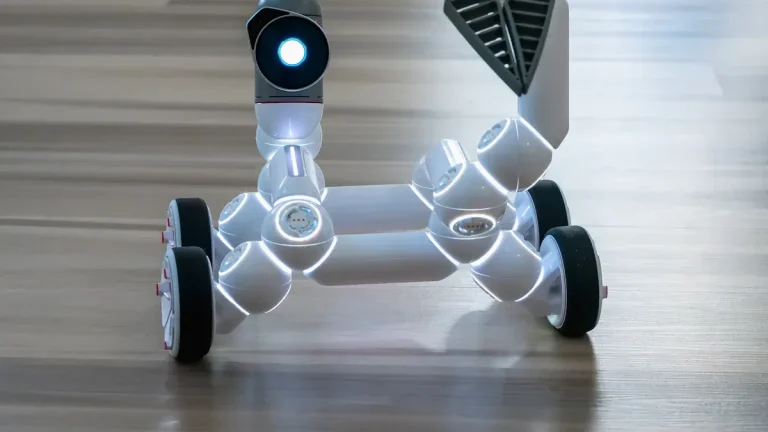
When you think about energy storage, the octagon battery stands out as a benchmark for innovation. It fulfills eight critical metrics, including watt-hours, energy density, cycle life, and charge speed. These parameters ensure exceptional reliability and performance. The octagon battery combines efficiency and sustainability, making it ideal for advancing modern energy solutions.
Part 1: Advantages of The Octagon Battery

1.1 High Specific Energy and Power
The Octagon Battery excels in delivering high specific energy, a critical factor for applications requiring long runtimes. Devices like consumer electronics and electric vehicles benefit significantly from this feature. For instance, lithium-ion batteries, known for their high specific energy, can achieve up to 250 Ah/kg in energy cells. This makes them ideal for powering devices that demand extended operational hours without frequent recharging.
Moreover, the Octagon Battery provides high specific power, ensuring it can handle high-load applications such as power tools and electric powertrains. While specific energy focuses on runtime, specific power emphasizes the battery’s ability to deliver bursts of energy efficiently. This dual capability makes the Octagon Battery versatile for both consumer and industrial applications.
Tip: High specific energy and power are essential for grid-scale energy storage systems, where efficiency and reliability are paramount.
1.2 High Specific Power
High specific power is another standout feature of the Octagon Battery. This characteristic ensures that the battery can deliver energy quickly, making it suitable for high-performance applications like robotics and security systems. For example, power tools and electric vehicles rely on batteries with high specific power to perform demanding tasks efficiently.
The Octagon Battery’s design optimizes energy delivery without compromising safety or longevity. This balance is crucial for applications that require both power and reliability.
1.3 Affordable Price
Affordability is a key advantage of the Octagon Battery. While the cost of energy from batteries is approximately three times higher than that from the AC grid, the Octagon Battery’s efficient design helps offset this difference. By optimizing materials, refining processes, and manufacturing techniques, the battery achieves a competitive price point.
For instance:
Single-cell use in mobile phones reduces costs by eliminating the need for cell matching.
Volume production further lowers manufacturing expenses, making the Octagon Battery accessible for various applications.
This affordability makes the Octagon Battery a viable option for both consumer and industrial markets.
1.4 Enhanced Thermal Management and Safety
Thermal management is a critical aspect of battery performance, and the Octagon Battery excels in this area. Its Battery Management System (BMS) monitors parameters like voltage and temperature, ensuring optimal operating conditions. This system enhances both safety and longevity.
Temperature Range | Effect on Performance |
|---|---|
0°C to 45°C | Optimal performance |
Below 0°C | Reduced capacity |
Above 45°C | Risk of thermal runaway |
Research supports these claims. For example, studies show that improving the thermal conductivity of phase change materials can lower battery cell temperatures by up to 5°C. Additionally, the use of aluminum tubes filled with Phase Change Material (PCM) has demonstrated significant safety improvements, including a peak temperature reduction of up to 18°C during high discharge rates.
1.5 Wide Operating Range
The Octagon Battery performs optimally across a wide range of temperatures, making it suitable for diverse environments. It operates best at room temperature but can handle extreme conditions with some limitations. For instance, it cannot charge below freezing temperatures, and high heat can reduce its lifespan.
Battery Type | Charge Temperature | Discharge Temperature | Charge Advisory |
|---|---|---|---|
Lead acid | –20°C to 50°C | –20°C to 50°C | Charge at 0.3C or less below freezing. Lower V-threshold by 3mV/°C when hot. |
NiCd, NiMH | 0°C to 45°C | –20°C to 65°C | Charge at 0.1C between –18°C and 0°C. Charge at 0.3C between 0°C and 5°C. |
Li-ion | 0°C to 45°C | –20°C to 60°C | No charge permitted below freezing. Good charge/discharge performance at higher temperature but shorter life. |
This wide operating range makes the Octagon Battery ideal for applications in infrastructure, transportation, and industrial settings.
1.6 Fast Charging
Fast charging is a hallmark of the Octagon Battery, enhancing user convenience and efficiency. It supports various charging levels:
Level 1 Charging: 7 to 30 hours for batteries up to 12kWh.
Level 2 Charging: 4 to 5 hours for mid-sized EVs.
Level 3 Charging (DC Fast Charger): Charges to 80% in about 30 minutes.
This capability is particularly beneficial for grid-scale energy storage and consumer electronics, where quick turnaround times are essential.
1.7 Longevity
Longevity sets the Octagon Battery apart from its competitors. Extending battery life from the typical 8–10 years to 20 years justifies the initial investment, especially in applications like electric vehicles. Endurance tests reveal that the Octagon Battery performs well under real-world conditions, maintaining voltage levels and capacity over extended cycles.
Aspect | Endurance Tests | Conventional Battery Durability Measures |
|---|---|---|
Methodology | Simulates real-world conditions to assess performance and longevity | Standardized tests under controlled conditions |
Failure Mode Investigation | Focuses on specific failure modes observed in field applications | Generalized failure assessments |
Testing Conditions | Often involves increased temperatures and depth-of-discharge | Typically conducted at standard temperature and discharge rates |
Evaluation Metrics | Measures voltage levels under cyclic load and high-rate discharge pulses | Usually involves capacity tests and cycle life assessments |
This durability makes the Octagon Battery a reliable choice for industrial and consumer applications.
1.8 Sustainable Development and Environmental Protection
The Octagon Battery aligns with sustainable development goals, minimizing environmental impact. It uses non-toxic materials and supports recycling initiatives. For more on sustainability, visit Sustainability at Large Power.
Additionally, the battery avoids conflict minerals, ensuring ethical sourcing.
Note: By choosing the Octagon Battery, you contribute to a greener future while enjoying top-tier performance.
The lithium battery redefines electrochemical energy storage by meeting the eight essential requirements of a high-performing battery. Its design ensures high energy efficiency, safety, and longevity. Machine learning advancements further optimize lithium battery applications, enhancing their industrial potential. With 2-10 times higher economic value than lead-acid batteries, lithium batteries represent the future of sustainable energy solutions.
FAQ
1. What makes the Octagon Battery unique compared to other energy storage solutions?
The Octagon Battery stands out due to its ability to meet eight critical performance metrics, including high energy efficiency, safety, and longevity. Its design ensures unmatched reliability.
2. Can the Octagon Battery be customized for specific industrial applications?
Yes, Large Power offers tailored solutions for industrial needs. You can explore custom battery options here to meet your unique energy requirements.
3. How does the Octagon Battery contribute to sustainable energy practices?
The Octagon Battery uses non-toxic materials and supports recycling initiatives. Learn more about its sustainability efforts here.






